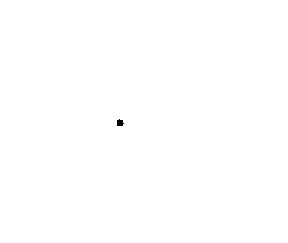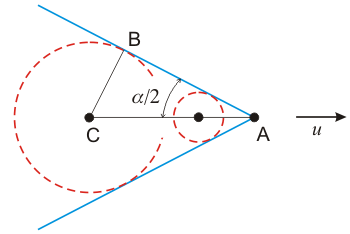DOPPLER EFFECT – ADVANCED READING
 Waves
Waves
 Shock wave
Shock wave
If the source of waves moves faster than the waves, than the waves cannot goes before the source:

This phenomenon is called shock wave, in sound problems it is called sound barrier. The sound is moving in typical cone after the source. For example the observer standing on the ground looks on the ultrasonic airplane and he is able to see the plane, but he will be able to hear the plane after he will be in the sound cone behind the plane.

From the geometry of this problem is easy to find the top angle of the cone sin α/2 = CB/CA = ct/ut = c/u, where c is the sound velocity and u is the velocity of the source. The top angle depends only on the rate of these velocities:
| sin α/2 = c/u | (1) |
In the movie below you can see the fly-by of the F 14 Tomcat through the sound barrier. The creation of the cone shock wave is obvious. If the source of waves moves with velocity lower than sound velocity, the sound can moves in every direction. If the source of waves moves with ultrasonic speed, the sound can moves only in the area in the cone shock wave. U. S. Navy, John Gay, 1999
Similar shock wave can originate behind the charged particle which is moving with superluminal velocity in the matter (not in the vacuum - in the vacuum nothing can moves with superluminal velocity). The typical cone of electromagnetic waves behind the charged particle is called Cherenkov radiation.
